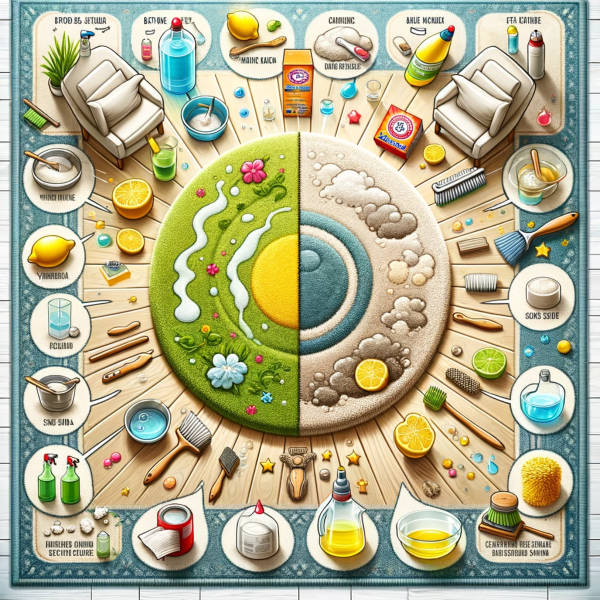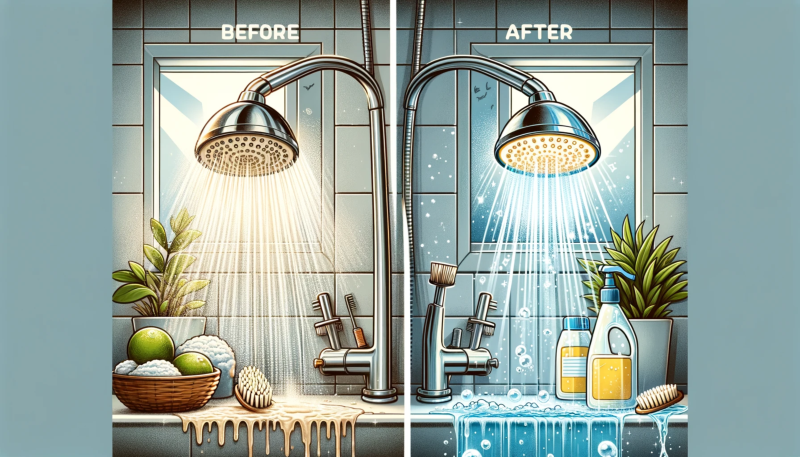Raw chicken is a versatile and delicious protein that is a staple in many kitchens. Whether you're planning to roast it, grill it, or use it in a recipe, it's important to know how to store raw chicken properly to ensure its freshness and safety. In this article, we will discuss the shelf life of raw chicken and provide some important safety tips to keep in mind.
When it comes to storing raw chicken, it's crucial to keep it at the right temperature to prevent the growth of harmful bacteria. The ideal temperature for storing raw chicken is below 40°F (4°C). This means that it should be kept in the refrigerator as soon as possible after purchasing it. It's important to note that chicken should never be left at room temperature for more than two hours, as this can increase the risk of bacterial growth.
It's also important to store raw chicken in a separate container or package to prevent cross-contamination with other foods. Raw chicken can contain bacteria such as Salmonella or Campylobacter, which can cause foodborne illnesses if they come into contact with other foods. To prevent this, it's recommended to store raw chicken in a sealed container or plastic bag on the bottom shelf of the refrigerator, away from other foods.
Additionally, it's important to pay attention to the shelf life of raw chicken. On average, raw chicken can be stored in the refrigerator for 1-2 days. If you're not planning to use it within that time frame, it's best to freeze it. When properly stored in the freezer, raw chicken can last for several months. However, it's important to note that the quality and taste of the chicken may deteriorate over time, so it's best to use it within 3-4 months.
Understanding the Shelf Life of Raw Chicken in the Fridge
When it comes to storing raw chicken in the fridge, understanding its shelf life is crucial for maintaining food safety. Raw chicken is a highly perishable food item and can quickly spoil if not stored properly.
The shelf life of raw chicken in the fridge depends on several factors, including the temperature of the fridge, the packaging of the chicken, and the freshness of the chicken when purchased. On average, raw chicken can be safely stored in the fridge for 1 to 2 days.
It is important to note that these guidelines are just estimates, and it is always best to rely on your senses and check for signs of spoilage before consuming raw chicken. Signs of spoilage include a foul odor, slimy texture, or discoloration of the chicken.
To maximize the shelf life of raw chicken in the fridge, it is essential to store it properly. Keep raw chicken in its original packaging or place it in a leak-proof container to prevent cross-contamination. Store the chicken on the bottom shelf of the fridge to prevent any potential drips from contaminating other foods.
It is also crucial to keep the fridge temperature at or below 40°F (4°C) to slow down bacterial growth and maintain food safety. Regularly check the temperature of your fridge with a thermometer to ensure it is within the safe range.
If you don't plan to use the raw chicken within the recommended shelf life, it is advisable to freeze it for longer storage. Properly packaged raw chicken can be safely stored in the freezer for up to 9 months. However, it is important to thaw frozen chicken properly before cooking to ensure even cooking and prevent foodborne illnesses.
By understanding the shelf life of raw chicken in the fridge and following proper storage guidelines, you can ensure the safety and quality of your food.
How long can raw chicken last in fridge?
Raw chicken can typically last in the fridge for 1-2 days if stored properly. It is important to keep raw chicken in the coldest part of the fridge, which is usually the bottom shelf. This helps to prevent the growth of bacteria and keeps the chicken at a safe temperature.
It is recommended to store raw chicken in a sealed container or bag to prevent any cross-contamination with other foods. This also helps to keep the chicken moist and prevent it from drying out. If the chicken is not going to be used within 1-2 days, it is best to freeze it to extend its shelf life.
When storing raw chicken in the fridge, it is important to check for any signs of spoilage before using it. This includes looking for any changes in color, texture, or odor. If the chicken appears slimy, has an off smell, or has a gray or greenish tinge, it should be discarded immediately.
Properly storing raw chicken and following safe handling practices can help to ensure its freshness and safety. It is important to always practice good hygiene, such as washing hands and kitchen surfaces after handling raw chicken, to prevent the spread of bacteria.
How can you tell if refrigerated chicken is still good?
It's important to ensure that refrigerated chicken is still safe to consume before cooking or eating it. Here are a few ways to determine if the chicken is still good:
| Appearance | Check for any changes in color or texture. Fresh chicken should have a pinkish color and a firm texture. If the chicken appears grayish or slimy, it may be spoiled and should be discarded. |
| Smell | Give the chicken a sniff. Fresh chicken should have a mild, clean odor. If there is a strong or unpleasant smell, it could be a sign of spoilage. |
| Touch | Feel the chicken for any sliminess or stickiness. Fresh chicken should feel smooth and dry to the touch. If it feels slimy or sticky, it's best to throw it away. |
| Expiry date | Check the expiry or 'use by' date on the packaging. If the chicken has exceeded this date, it's best to err on the side of caution and discard it. |
It's important to note that these are general guidelines and may vary depending on the specific conditions in which the chicken was stored. If you have any doubts about the freshness or safety of the chicken, it's always best to discard it to prevent the risk of foodborne illnesses.
steam cleaner
What shelf should raw chicken be stored?
When storing raw chicken, it is important to keep it in a designated area of your refrigerator to prevent cross-contamination and ensure food safety. The ideal shelf to store raw chicken is the bottom shelf, as it helps to prevent any juices from dripping onto other foods and contaminating them.
You can also consider placing the raw chicken on a plate or in a container to further prevent any potential leakage. Make sure to keep the raw chicken away from ready-to-eat foods, such as fruits, vegetables, and cooked meats, to minimize the risk of bacterial contamination.
It is recommended to store raw chicken in its original packaging, which is often sealed and leak-proof. However, if the packaging is damaged or if you prefer to transfer the chicken to a different container, make sure it is tightly sealed to prevent any bacteria from entering or spreading.
Remember to always follow the storage instructions provided by the manufacturer and check the expiration date to ensure the chicken is still fresh. If you notice any signs of spoilage, such as an off odor or unusual texture, it is best to discard the chicken to avoid any potential foodborne illnesses.
| Storage Tips for Raw Chicken: |
|---|
| Store raw chicken on the bottom shelf of the refrigerator. |
| Keep raw chicken away from ready-to-eat foods. |
| Store raw chicken in its original packaging or a tightly sealed container. |
| Check the expiration date and discard any spoiled chicken. |
Sell-by Dates and Chicken Freshness: What You Need to Know
When it comes to buying chicken, understanding sell-by dates is crucial for ensuring freshness and safety. The sell-by date is the date that the store must sell the chicken by, and it is usually printed on the packaging. It is important to note that this date is not an expiration date, but rather a guideline for the store.
Consumers can still safely consume chicken for a few days after the sell-by date, as long as it has been stored properly. However, it is always recommended to use your best judgment and inspect the chicken for any signs of spoilage, such as a foul odor or unusual color.
If you plan to store chicken for a longer period of time, it is recommended to freeze it before the sell-by date. Freezing can help extend the shelf life of chicken and maintain its quality. When freezing chicken, make sure to wrap it tightly in plastic wrap or place it in a freezer-safe container to prevent freezer burn and maintain its freshness.
It is important to note that even if chicken is within its sell-by date, it can still spoil if it has been mishandled or stored improperly. To ensure the freshness and safety of chicken, always practice proper food safety measures, such as storing it at the correct temperature (below 40°F or 4°C) and cooking it to the recommended internal temperature (165°F or 74°C).
In conclusion, understanding sell-by dates and practicing proper storage and food safety measures are essential for maintaining the freshness and safety of chicken. By following these guidelines, you can ensure that your chicken is safe to consume and enjoy.
How fresh is chicken after the sell by date?
When it comes to chicken, the sell-by date is an important indicator of freshness. However, it's important to note that the sell-by date is not an expiration date. So, how fresh is chicken after the sell-by date?
The freshness of chicken after the sell-by date depends on how it has been stored. If the chicken has been stored properly in the refrigerator at or below 40°F (4°C), it can still be safe to eat for a few more days after the sell-by date. However, the quality and taste of the chicken may start to deteriorate.
It's important to examine the chicken closely before consuming it after the sell-by date. Look for any signs of spoilage, such as a foul odor, slimy texture, or discoloration. If you notice any of these signs, it's best to discard the chicken to avoid the risk of foodborne illness.
If the chicken looks and smells fine after the sell-by date, you can still cook it safely. However, it's recommended to use it within one to two days to ensure the best quality and taste.
Remember, proper storage is key to maintaining the freshness of chicken. Always store raw chicken in its original packaging or in a sealed container to prevent cross-contamination with other foods. Keep it refrigerated at all times and make sure your refrigerator temperature is set correctly. Additionally, avoid leaving chicken at room temperature for more than two hours to minimize the risk of bacterial growth.
| Signs of spoilage: | Safe to consume? |
|---|---|
| Foul odor | No |
| Slimy texture | No |
| Discoloration | No |
In conclusion, while chicken can still be safe to eat after the sell-by date, it's important to use your senses to determine its freshness. When in doubt, it's always better to err on the side of caution and discard the chicken to avoid any potential health risks.
How long is meat good after sell by date?
Many people wonder how long meat is safe to consume after the sell-by date has passed. While the sell-by date is an indicator of when the meat should be sold by, it does not necessarily mean that the meat is spoiled or unsafe to eat.
In general, if the meat has been stored properly and has not been opened, it can be safe to consume for a few days after the sell-by date. However, it is important to use your senses to determine if the meat is still good. Look for any signs of spoilage, such as a foul odor, slimy texture, or unusual color. If any of these signs are present, it is best to discard the meat.
It is also important to note that different types of meat have different shelf lives. For example, fresh poultry and ground meat should be consumed within 1-2 days after the sell-by date, while steak or pork chops can last for 3-5 days. It is always best to follow the guidelines provided on the packaging or consult with a reliable source, such as the USDA, for specific recommendations.
In order to maximize the shelf life of meat, it is crucial to store it properly. Keep meat refrigerated at a temperature below 40°F (4°C) and use it within the recommended time frame. If you are not planning to use the meat within a few days, it is recommended to freeze it. When freezing meat, make sure to wrap it tightly in plastic wrap or place it in an airtight freezer bag to prevent freezer burn.
Remember, when it comes to meat, it is always better to be safe than sorry. If you have any doubts about the quality or safety of the meat, it is best to err on the side of caution and discard it. Your health and well-being are worth it!
Is it safe to eat chicken after use by date?
Consuming chicken after its use by date can be risky and is not recommended. The use by date is provided by the manufacturer as a guideline for when the chicken is at its freshest and safest to consume. After this date, the quality and safety of the chicken may deteriorate.
While it is possible that the chicken may still be safe to eat after the use by date, there is a higher risk of foodborne illnesses such as salmonella or campylobacter. These bacteria can cause symptoms like nausea, vomiting, stomach cramps, and diarrhea.
It's important to note that the use by date is not an exact expiration date, but rather a recommendation for optimal safety and quality. It is always best to err on the side of caution and discard chicken that is past its use by date.
If you are unsure about the freshness or safety of your chicken, it is recommended to rely on your senses. Look for any signs of spoilage such as a foul odor, slimy texture, or change in color. If any of these are present, it is best to discard the chicken.
Proper storage and handling of raw chicken can also help extend its shelf life and ensure safety. It is important to keep chicken refrigerated at or below 40°F (4°C) and to cook it thoroughly to an internal temperature of 165°F (74°C) to kill any potential bacteria.
Overall, it is not worth the risk to consume chicken after its use by date. It is better to prioritize your health and safety by following the recommended guidelines and discarding chicken that is past its prime.
Tips for Storing Raw Chicken Safely in the Fridge
Properly storing raw chicken in the fridge is essential to ensure food safety and prevent the risk of foodborne illnesses. Follow these tips to store raw chicken safely:
| Tip | Description |
|---|---|
| 1 | Keep chicken in its original packaging |
| 2 | Place chicken on the bottom shelf of the fridge |
| 3 | Store chicken at a temperature below 40°F (4°C) |
| 4 | Use a leak-proof container or a sealed plastic bag |
| 5 | Do not store chicken near ready-to-eat foods |
| 6 | Keep chicken away from other raw meats |
| 7 | Do not store chicken in the fridge for more than 2 days |
| 8 | Regularly clean and sanitize your fridge |
By following these tips, you can ensure that your raw chicken stays fresh and safe to consume for as long as possible.
How do you store raw chicken in the fridge?
Storing raw chicken properly in the fridge is essential to maintain its freshness and prevent the growth of harmful bacteria. Here are some tips on how to store raw chicken:
- Keep the chicken in its original packaging if it is still sealed. This packaging is designed to keep the chicken fresh.
- If the original packaging is damaged or opened, transfer the chicken to airtight containers or resealable bags. Make sure to remove as much air as possible before sealing.
- Place the chicken on the bottom shelf of the fridge to prevent any juices from dripping onto other foods and causing cross-contamination.
- Keep the fridge temperature at or below 40°F (4°C) to slow down the growth of bacteria.
- Do not store raw chicken near ready-to-eat foods to avoid the risk of cross-contamination. Use separate shelves or containers.
- If you plan to store raw chicken for longer periods, consider freezing it. Wrap the chicken tightly in freezer-safe packaging to maintain its quality.
By following these guidelines, you can ensure that your raw chicken stays fresh and safe to consume for longer periods.
Is it OK to leave raw chicken uncovered in the fridge?
It is generally not recommended to leave raw chicken uncovered in the fridge. Raw chicken can easily contaminate other food items and surfaces in the refrigerator if it is not properly covered.
papaya
When raw chicken is left uncovered in the fridge, it can release liquid that may contain harmful bacteria, such as Salmonella or Campylobacter. These bacteria can multiply rapidly at temperatures between 40°F (4°C) and 140°F (60°C), which is known as the 'danger zone'. If raw chicken comes into contact with other food items in the fridge, these bacteria can spread and potentially cause foodborne illness.
To prevent cross-contamination and ensure food safety, it is best to store raw chicken in a sealed container or securely wrapped in plastic wrap or aluminum foil. This not only helps contain any liquids, but also prevents the chicken from coming into direct contact with other food items in the fridge.
Additionally, storing raw chicken on the bottom shelf of the fridge is recommended, as it helps prevent any potential drips or spills from contaminating other items. It is also important to regularly clean and sanitize the fridge to remove any potential bacteria or contaminants.
Overall, it is important to handle raw chicken with care and follow proper food safety practices to minimize the risk of foodborne illnesses.
Can raw chicken be stored in water or ice?
Storing raw chicken in water or ice is not recommended. While it may seem like a convenient way to keep the chicken cool and prevent bacterial growth, it can actually increase the risk of contamination and foodborne illnesses.
When raw chicken is stored in water or ice, it can become waterlogged and absorb excess moisture, which can dilute the natural flavors of the meat. Additionally, the water or ice can become a breeding ground for bacteria, especially if the temperature is not properly maintained.
It is best to store raw chicken in its original packaging or in a sealed container in the refrigerator. This will help maintain the quality of the meat and minimize the risk of cross-contamination with other foods. If you need to thaw frozen chicken, it is recommended to do so in the refrigerator or using the defrost function of your microwave.
| Storage Method | Recommended Temperature | Maximum Shelf Life |
|---|---|---|
| Refrigerator (0-4°C) | 1-2 days | |
| Freezer (-18°C or below) | Up to 9 months |
Remember to always practice good food safety habits when handling raw chicken. This includes washing your hands thoroughly after handling raw chicken, using separate cutting boards and utensils for raw chicken and other foods, and cooking the chicken to the appropriate internal temperature to ensure it is safe to consume.
Can I store chicken in a plastic bag?
Storing raw chicken in a plastic bag is not recommended. While it may seem convenient, storing chicken in a plastic bag can increase the risk of bacterial contamination and foodborne illness.
Plastic bags are not airtight and can allow for the growth of bacteria. Additionally, the plastic can leach chemicals into the chicken, which can be harmful when consumed. It is best to store raw chicken in a container or airtight bag specifically designed for food storage.
When storing raw chicken, it is important to keep it separate from other foods to prevent cross-contamination. Store the chicken on the bottom shelf of the refrigerator to prevent any juices from dripping onto other foods.
If you must use a plastic bag to temporarily store chicken, make sure it is a food-grade bag that is clean and in good condition. It is also important to use the chicken within a short period of time and to properly cook it to ensure it is safe to eat.
| Storage Tips |
|---|
| Use airtight containers or bags specifically designed for food storage. |
| Keep raw chicken separate from other foods to prevent cross-contamination. |
| Store chicken on the bottom shelf of the refrigerator to prevent any juices from dripping onto other foods. |
| Use a food-grade plastic bag if you must temporarily store chicken, and use it within a short period of time. |
| Always properly cook chicken to ensure it is safe to eat. |
Recognizing Signs of Spoilage in Raw Chicken
It's important to be able to recognize the signs of spoilage in raw chicken to ensure the safety of your meals. Here are some common indicators that raw chicken has gone bad:
- Strange odor: If the chicken has a strong, unpleasant smell, it is likely spoiled. Trust your nose and discard the chicken.
- Discoloration: Look for any changes in color, such as gray or greenish hues. Fresh chicken should have a pink or light beige color.
- Texture changes: Spoiled chicken may feel slimy or sticky to the touch. Fresh chicken should have a firm texture.
- Mold or unusual growth: If you see any signs of mold or unusual growth on the chicken, it is definitely no longer safe to eat.
- Excessive liquid: If there is an excessive amount of liquid in the packaging or on the chicken itself, it can be a sign of spoilage.
- Expiration date: Always check the expiration date on the packaging. If the chicken is past its expiration date, it is best to discard it.
It is important to note that these signs of spoilage may not always be present, especially in the early stages of chicken going bad. Therefore, it's crucial to follow proper food safety practices and store raw chicken properly to minimize the risk of spoilage and foodborne illnesses.
What are the signs of spoilage raw chicken?
When it comes to raw chicken, it is crucial to be able to recognize the signs of spoilage in order to ensure food safety. Here are some common signs that raw chicken may be spoiled:
- Unpleasant odor: If the chicken has a strong, unpleasant smell, similar to ammonia or sulfur, it is likely spoiled and should not be consumed.
- Discoloration: Fresh raw chicken should have a pinkish color. If the chicken appears gray or yellow, it is a sign of spoilage.
- Texture changes: Spoiled chicken may feel slimy or sticky to the touch. This is an indication that bacteria have started to grow.
- Visible mold: If you notice any mold on the chicken, it should be discarded immediately. Mold can produce toxins that can cause food poisoning.
- Excessive moisture: If there is excessive moisture or liquid in the packaging, it could be a sign of spoilage. This can be an indication that the chicken has been stored improperly.
- Slimy or sticky packaging: If the packaging feels slimy or sticky, it is best to discard the chicken. This can be a sign of bacterial growth.
- Expired date: Check the expiration date on the packaging. If the chicken is past its expiration date, it is not safe to consume.
It is important to note that even if the chicken does not show any obvious signs of spoilage, it can still be contaminated with harmful bacteria such as Salmonella or Campylobacter. Therefore, it is always best to follow proper storage and food safety guidelines when handling raw chicken.
What color is spoiled raw chicken?
When it comes to raw chicken, the color is one of the key indicators of freshness. Fresh raw chicken should have a pinkish color with a slight bluish tinge. However, as chicken starts to spoil, its color changes.
One of the first signs of spoiled raw chicken is a change in color. The pinkish hue will turn into a grayish or yellowish color. This discoloration is a result of bacterial growth and the breakdown of proteins in the meat.
It's important to note that the color change alone may not always indicate spoilage. Sometimes, fresh chicken can have patches of white or yellow fat, which is normal. However, if the entire chicken appears discolored or has a strong, unpleasant odor, it's a clear sign that it has gone bad and should not be consumed.
It's crucial to handle raw chicken properly and store it at the right temperature to minimize the risk of spoilage. Always check the color and smell of raw chicken before cooking it to ensure its freshness and safety.
| Signs of spoiled raw chicken: |
|---|
| Change in color to grayish or yellowish |
| Strong, unpleasant odor |
| Slime or stickiness on the surface |
| Visible mold |
What is the appearance of spoiled chicken?
When raw chicken spoils, there are several visual cues that can indicate its deterioration. These signs include:
Color: Fresh raw chicken should have a pinkish color. However, if it starts to turn gray or yellow, it is a clear indication of spoilage. The color change is often accompanied by a slimy texture.
Smell: Spoiled chicken has a distinct and unpleasant odor. If the chicken smells sour, rotten, or ammonia-like, it is best to discard it immediately.
Texture: Fresh raw chicken should feel slightly firm and springy to the touch. When it spoils, the texture becomes slimy or sticky. Additionally, the meat may feel mushy or have a sticky film on its surface.
Visible changes: Spoiled chicken may develop green or black patches, indicating the growth of mold or bacteria. It may also show signs of excessive moisture or dehydration, such as excessive wateriness or dryness.
Presence of feathers: If the raw chicken still has feathers attached, it is a clear indication that it has not been properly cleaned and processed. This could increase the risk of bacterial contamination and spoilage.
It is important to note that consuming spoiled chicken can lead to foodborne illnesses, such as salmonella or campylobacter infection. Therefore, it is crucial to properly inspect the appearance of raw chicken before cooking and discard it if any signs of spoilage are present.
Q&A:
How long can raw chicken be stored in the refrigerator?
Raw chicken can be stored in the refrigerator for up to 2 days.
Can I freeze raw chicken?
Yes, raw chicken can be frozen. It is best to freeze it as soon as possible after purchase and it will typically last for up to 9 months in the freezer.
What is the best way to store raw chicken in the refrigerator?
The best way to store raw chicken in the refrigerator is to keep it in its original packaging or place it in a leak-proof plastic bag. It should be stored on the bottom shelf of the refrigerator to prevent any juices from dripping onto other foods.
How can I tell if raw chicken has gone bad?
If raw chicken has a strong odor, a slimy texture, or if it has a grayish color, it is likely spoiled and should not be consumed.
What are some safety tips for handling raw chicken?
Some safety tips for handling raw chicken include washing your hands thoroughly before and after handling it, using separate cutting boards and utensils for raw chicken, and cooking it to an internal temperature of 165°F (74°C) to kill any bacteria.
How long can raw chicken be stored in the refrigerator?
Raw chicken can be stored in the refrigerator for up to 2 days.
Can I freeze raw chicken?
Yes, you can freeze raw chicken. It can be stored in the freezer for up to 9 months.
What is the best way to store raw chicken in the refrigerator?
The best way to store raw chicken in the refrigerator is to keep it in its original packaging or place it in a leak-proof plastic bag or container. Make sure to place it on the bottom shelf to prevent any juices from dripping onto other foods.





